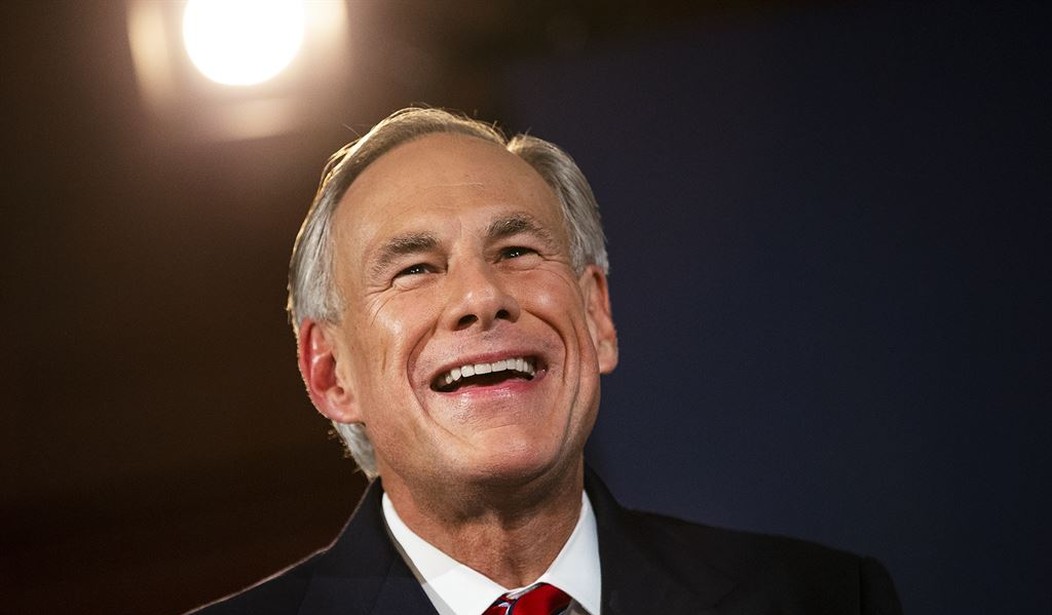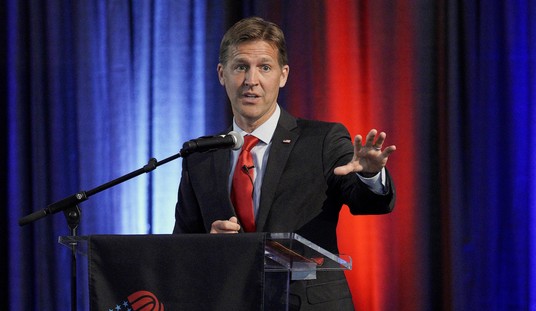We haven’t done an update on Texas in a few weeks and the occasion of the 40th day after Greg Abbott lifted the state’s mask mandate and capacity limits on businesses seems like a fine time. Abbott’s order took effect on March 10, after cases in Texas had fallen steadily for more than a month. Public health experts begged him to be patient with restrictions for a few more weeks until more of the state’s population could be vaccinated. Vaccine supply was increasing, after all. Why tempt fate by doing what Chile did, encouraging people to emerge from lockdown before there was enough immunity in the population to hold off a wave?
Abbott didn’t listen, and was attacked by the president for “Neanderthal thinking” by insisting on easing precautions.
Forty days later, there’s no evidence that Texans have paid a price:

For the better part of a month cases in the state have hovered at around 3,200 per day, lower than any period of the pandemic since last June. Either the mask mandate and capacity limits didn’t matter much or Texas is vaccinating people at a rate faster than the virus can spread or there’s a lot of natural immunity in the population at this stage that’s limiting transmission or there’s a “weather effect” in the south in which people are spending more time outdoors enjoying the nice weather, reducing infections. Or all of the above, of course.
The one thing we can safely safe is that not having a mask mandate in place isn’t enough to drive cases up amid the downward pressure on community spread exerted by those other three factors.
Texas wasn’t the only southern state that made a splash in March by rescinding its mask mandate amid scientists howling at them not to do so. Mississippi pulled the plug a week before Texas did, on March 3. Result:

The state recorded 541 cases on March 3, the day the mandate ended. Yesterday it recorded 248, less than half that number.
Thanks to the trends in Texas and Mississippi, it’s no longer just right-wing commentators who are questioning the indefinite need for mask mandates. Over the weekend a writer at Slate wondered why people should still need to wear masks outdoors. Today at the Atlantic, Derek Thompson asked that same question in the context of mandates. Given how rarely infection seems to happen outdoors plus the fact that more than 50 percent of adults are now partially vaccinated, why should states still require people to mask up in the open air?
Julia Marcus, an epidemiologist at Harvard Medical School, spoke with several male mask skeptics last year for a piece in The Atlantic. When she explained that masking wasn’t as important outdoors, the men became more amenable to wearing them indoors. By connecting rules to reasons, she got them to see the value of covering their nose and mouth when it actually mattered. Last week, Marcus told me that she’s baffled by the notion that the best way to get people to wear masks inside is to mandate that everybody wear one when they’re alone outside. “We don’t recommend condom use when people are enjoying themselves alone to get them to wear condoms with their sexual partners,” she said…
[W]e … need to build a sensible path to the post-pandemic world. A lot of people seem to have embraced an omni-neurotic approach to COVID-19 safety: “Don’t go to the beach, don’t take a walk with friends, don’t go to the park, don’t travel.” I prefer a more targeted-neurotic approach that just tells the truth. And the truth is that COVID-19 is basically an indoor/talking disease: If you’re indoors, or talking with people outside your household, or both, you should be cautious—mask and socially distance. Otherwise, the risk is much smaller, even if it’s rarely zero. So go outside; get vaccinated; and get your life back.
Robby Soave compares outdoor mask mandates to “security theater” at airports, something that doesn’t do much to actually prevent bad things from happening but makes observers feel a bit more at ease about the risk. “The TSA is a massive waste of time, money, and energy, and the American people have put up with it for more than 20 years,” he writes. “If we don’t want pandemic restrictions to become the new airport security, there needs to be pushback: Get vaccinated, and then get back to normal.”
While Texas and Mississippi continue to enjoy their pandemic reprieve after lifting mask mandates, a state with one of the stricter mandates in the country continues to be the hottest hot spot in the USA:

The recent downward trend in Michigan is encouraging but it may be an artifact of less reporting by testing centers over the weekend. The state had its worst day of the pandemic just six days ago and its third-worst day three days ago. To try to put out the fire, they recently expanded their mask mandate — which applies to virtually all gatherings of any kind, indoors or outdoors — to two-year-olds. Even gatherings in homes among people from different households are supposed to require masks. Here’s Gretchen Whitmer on “Meet the Press” yesterday assessing what went wrong in her state. I lack some of the tools now that I was able to use before, she notes, a reference to the state legislature and supreme court stripping some of her lockdown powers. Okay, but Greg Abbott isn’t exercising those powers in his state either and Texas is doing just fine. What’s the difference between there and Michigan? Is it as simple as a “weather effect” in the south versus the north?
WATCH: Michigan Gov. Gretchen Whitmer says she's "working with a smaller set of tools" in battling Covid.@GovWhitmer: "I have been sued by my legislature, I have lost in a Republican-controlled Supreme Court. And I don't have all of the exact same tools" as before. pic.twitter.com/EAH1ZZPbmm
— Meet the Press (@MeetThePress) April 18, 2021








Join the conversation as a VIP Member